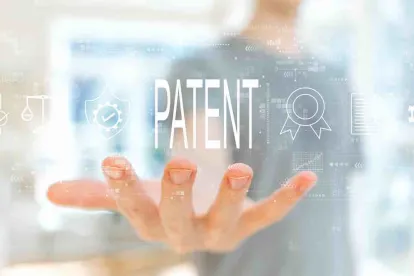The Federal Circuit in Apple Inc. v. Qualcomm Incorporated handed down a decision on April 7, 2021 that provides guidance on the determination of standing for patent licensees who wish to contest the validity of a patent or patents in a licensed portfolio. The decision also provides further guidance to petitioners seeking appellate review after an unsuccessful validity challenge before the Patent Trial and Appeal Board (PTAB).
More specifically, the recent decision by the Federal Circuit reaffirms the requirement that a patent licensee show a specific ascertainable injury in fact associated with the challenged patent in order to have standing to raise a validity challenge in an Article III court. The Court clarified that an ongoing payment obligation under a broad licensing agreement involving the challenged patent does not suffice as such an ascertainable injury. Rather, the patent licensee must establish that the invalidity of the challenged patent will directly affect ongoing payment obligations under a licensing agreement.
The Court found that Apple did not prove that its contractual payment obligations under a licensing agreement would change if the challenged patents were held invalid, as would be required to prove an injury-in-fact. Accordingly, the Court found that Apple lacked standing and declined to address the merits of Apple’s invalidity arguments against the challenged patents in an appealed Inter Partes Review (IPR) decision.
Background
Qualcomm initially sued Apple in in the United States District Court for the Southern District of California alleging infringement of U.S. Patent Nos. 7,844,037 (the “’037 patent”) and 8,683,362 (the “’362 patent”). Apple subsequently filed inter partes review (IPR) petitions before the PTAB challenging claims of both patents based on obviousness. The PTAB instituted the IPR proceedings but found that Apple did not prove that the challenged claims were obvious. Apple appealed and during the pendency of that appeal, Apple and Qualcomm executed a six-year licensing agreement that included the challenged patent claims that were asserted in the district court and subject to the IPR proceedings. Based on that agreement, the district court dismissed the case with prejudice. Notwithstanding that result, Apple appealed the PTAB’s IPR decisions to the Federal Circuit.
Apple’s Arguments for Standing and The CAFC’s Distinction
Apple argued that it had standing to appeal the PTAB decision based on (1) its ongoing payment obligations under the license agreement; (2) a future threat of suit for infringement after the expiration of the license agreement; and (3) the estoppel effects of 35 U.S.C. § 315. In support of its first argument, Apple relied upon the Supreme Court’s MedImmune, Inc. v. Genetech. Inc. decision. In MedImmune, Genentech asserted a MedImmune-licensed patent against a new MedImmune product and demanded royalty payments under a pre-existing license agreement that included the licensed patent. Even though MedImmune disagreed that it owed royalties on the grounds that the patent was invalid, it nevertheless made payments to avoid termination while concurrently challenging the patent’s validity in district court. The dispute over standing finally reached the Supreme Court who observed that although the standing requirements would have been satisfied if MedImmune had stopped making its royalty payments under the license agreement, this was not required for standing to seek a declaratory judgment of noninfringement and invalidity. Accordingly, the Court held that notwithstanding its failure to break the pre-existing license agreement, Medimmune had standing to resolve its disputed contract rights.
The issue here however, was different. While the licensing agreement between Apple and Qualcomm included the challenged patents, Apple failed to prove that the validity of the challenged patents would affect those contractual rights. Apple did not identify any contractual dispute involving its ongoing royalty obligations or provide evidence that the validity of any single patent would affect those obligations under a license involving tens of thousands of patents. This was fatal to proving an injury in fact under MedImmune.
Additional Standing Arguments
Regarding the possibility that Qualcomm may sue Apple for infringing the ’037 and ’362 patents after the six-year license expires, the court found that this claim was too speculative. The court further reasoned that Apple provided no evidence that it intended to engage in any activity that may give rise to an infringement suit of the challenged patents when the license expires. The court also rejected Apple’s argument that the settled district court action itself demonstrated a future threat of infringement and provided standing. The court noted that unlike the precedent Apple relied upon which involved a district court dismissal without prejudice, the district court’s dismissal below pursuant to the parties’ licensing agreement was with prejudice.
Finally, the Federal Circuit rejected Apple’s argument that standing existed due to the estoppel effects of 35 U.S.C. § 315(e) citing its prior precedent holding that rationale to be insufficient.
Takeaway
The decision makes clear that an injury in fact for the purposes of Article III standing to challenge patent validity cannot be demonstrated by patent licensees absent a showing of concrete effects on the licensee’s contractual obligations. IPR petitioners challenging a licensed but unasserted patent should also keep this decision in mind when assessing the possibility of any subsequent appeals to the Federal Circuit.







 />i
/>i
